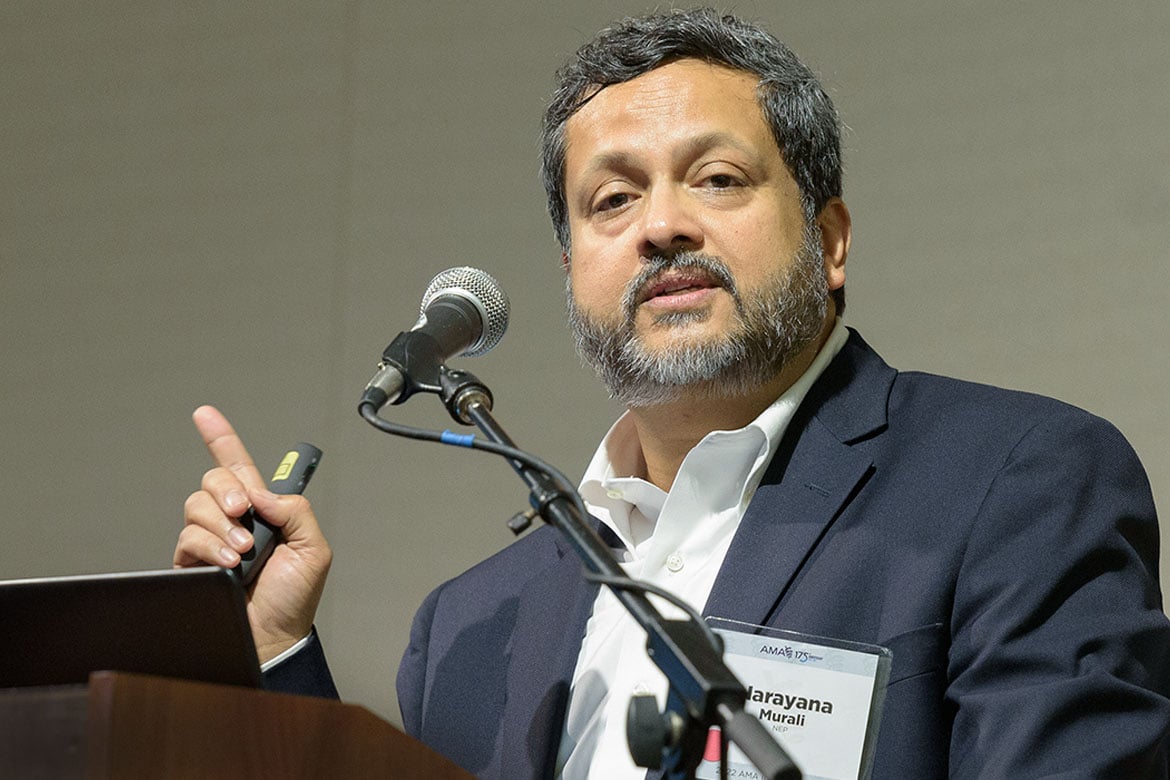Reports of intimidation, threats and attacks toward physicians and others in the medical field have risen significantly over last decade, with COVID-19 further exacerbating the problem.
Workplace violence is a national epidemic—but underreported. Most complaints aren’t shared, according to Narayana Murali, MD, chief medical officer for medicine services at Geisinger health system, a member of the AMA Health System Program that provides enterprise solutions to equip leadership, physicians and care teams with resources to help drive the future of medicine.
The Bureau of Labor Statistics reports that 10.4 in 10,000 workers experience nonfatal workplace violence in health care, compared to 2.1 in 10,000 across all industries. In surveys, at least one-quarter of all nurses say they’ve been assaulted by a patient or patient family member.
Mistreatment is especially prevalent among physicians who are women or from historically marginalized racial and ethnic groups, according to a JAMA Network Open study published last year.
At the 2022 AMA Interim Meeting, Dr. Murali joined physician leaders to discuss violence against physicians in practice settings—and what Geisinger is doing to prevent these incidents.
Hiring more security, boosting data
Geisinger has experienced homicides at clinic sites and assaults on a regular basis. So-called code gray incidents rose 21% in 2021.
Taking a pledge to keep everyone safe, Geisinger’s leaders created a multidisciplinary task force and systemwide oversight program to bolster security at all its sites.
“You need the workplace to be inviting for patients to come in, but you also need to have a single point of entry and multiple points of exit for safety from the standpoint of security,” Dr. Murali said.
The health system boosted its full-time security workers from 53 to 137 to protect health care staff and placed a new emphasis on reporting, data collection and analysis.
Not all events are related to premeditated violence. Patients may act out because they’re agitated or stressed. However, Geisinger’s leaders discovered that there was underreporting of events in their organization, compared with other health systems in the country.
One press of a button
Investment in technology is an important asset for de-escalating assaults, noted Dr. Murali.
Geisinger provided 6,000 staff with high-tech badge that activates assistance with the press of a button.
The alert identifies the employee and their location and sends security immediately. The badge system has been deployed in five sites at Geisinger to date. Soon there will be five more, with an aim to go systemwide this year, said Dr. Murali. To date, up to 375 activations have been addressed and de-escalated through this tool.
The health system also offers security escorts to staff and patients.
Metal detectors intercept dangerous weapons
Installing metal detectors has also paid off. Last year alone, the health system intercepted 5,000 knives, 346 pepper-spray containers, 130 firearms, 20 tasers and stun guns, and 1,800 other prohibited items.
“This tells you that this is a prevalent issue and something that we should not ignore,” said Dr. Murali.
In other measures, Geisinger has been using security K-9s to identify explosives and help with de-escalation. It has also installed 200 security cameras with embedded artificial intelligence capable of facial recognition.
Hands-on training
To further empower physicians and other employees, Geisinger has held active-shooter and defensive trainings.
The next step is to establish a Geisinger police force. The goal is to transition 20% of security to the police force within three years.
After these moves, a survey revealed that 87% of Geisinger’s associate employees said that supervisors have taken action to address safety concerns.
Outside of Geisinger, more organizations are adopting these types of security measures. Additionally, revised Joint Commission requirements have better defined workplace violence=prevention standards, said Dr. Murali.




